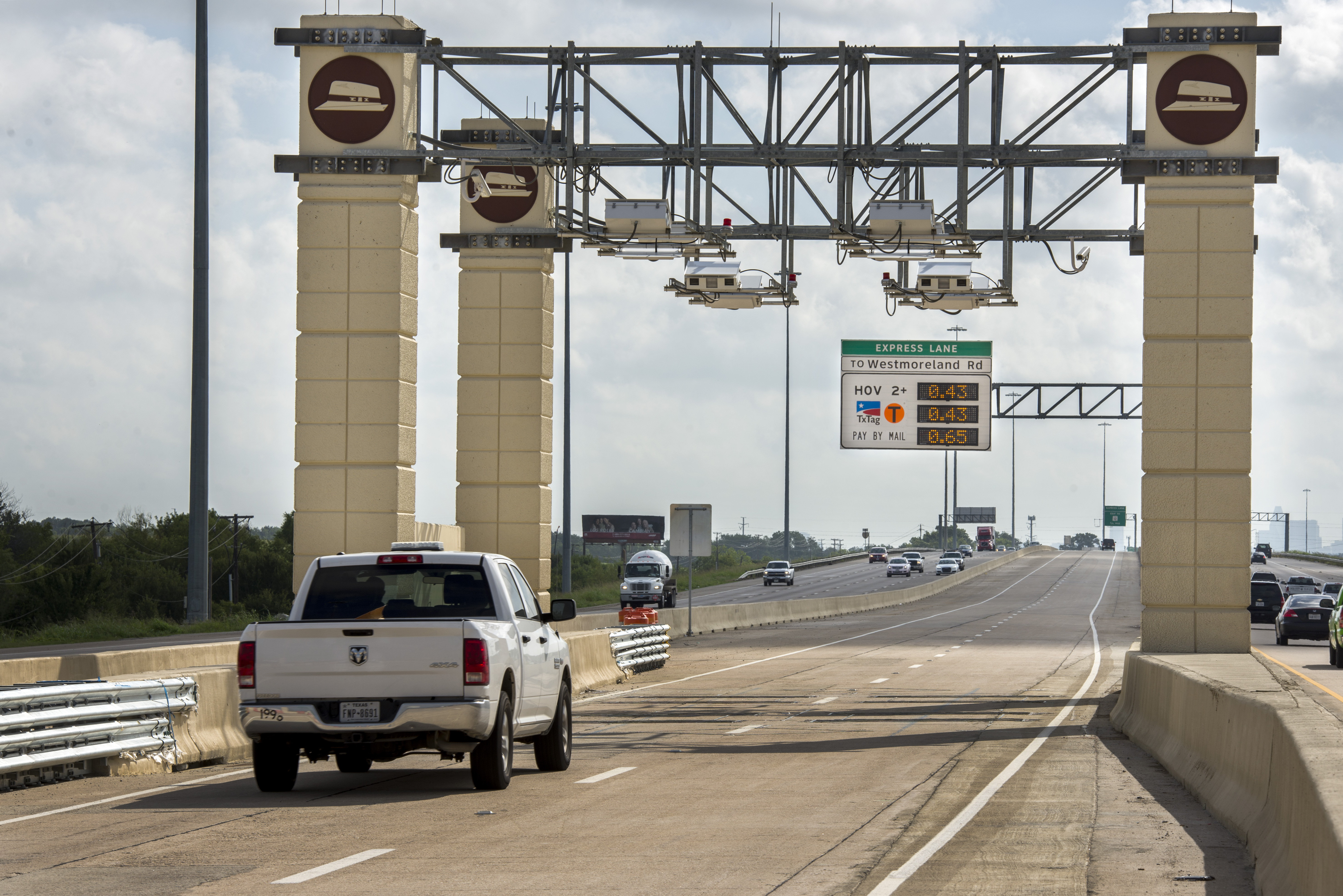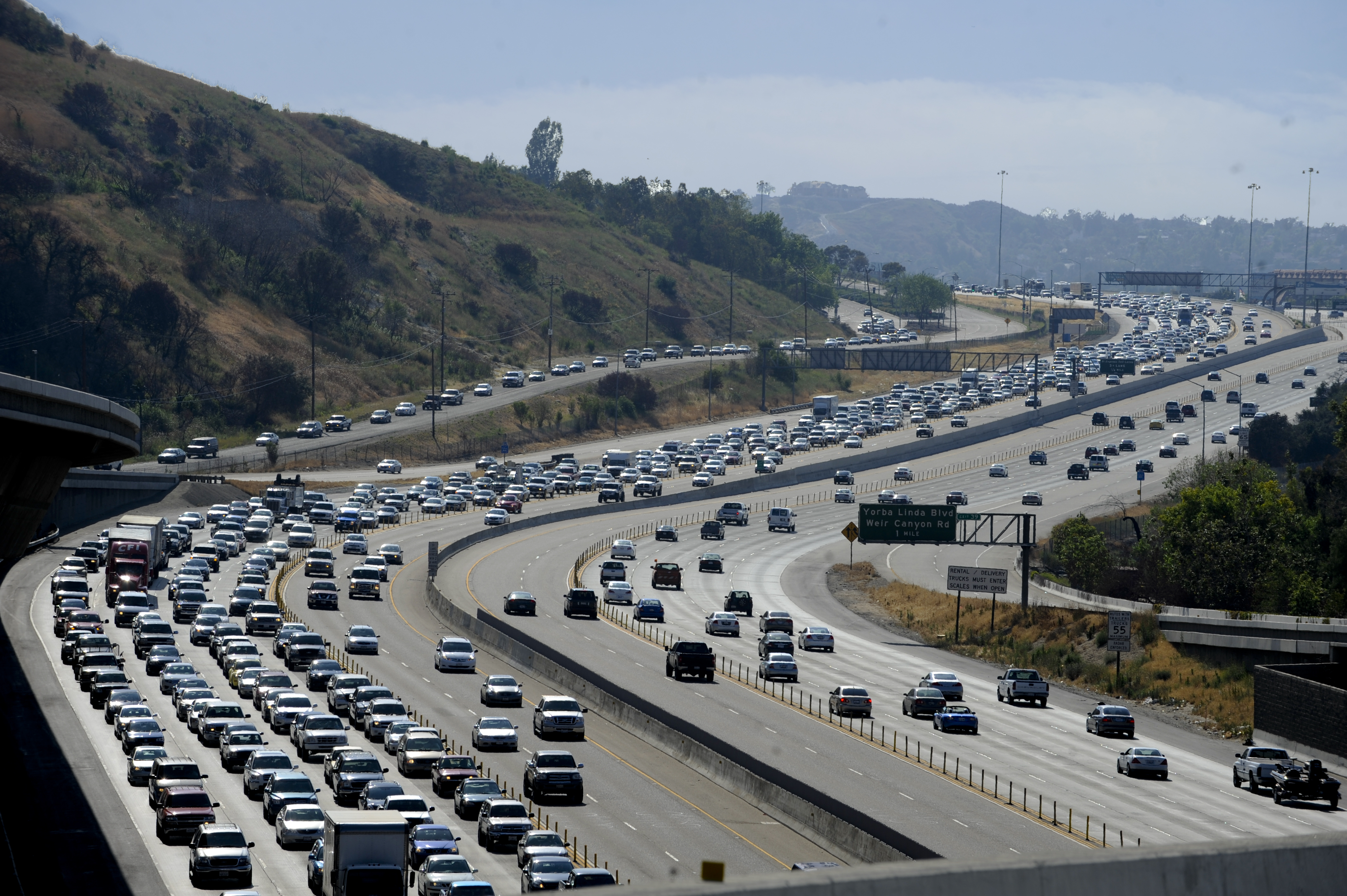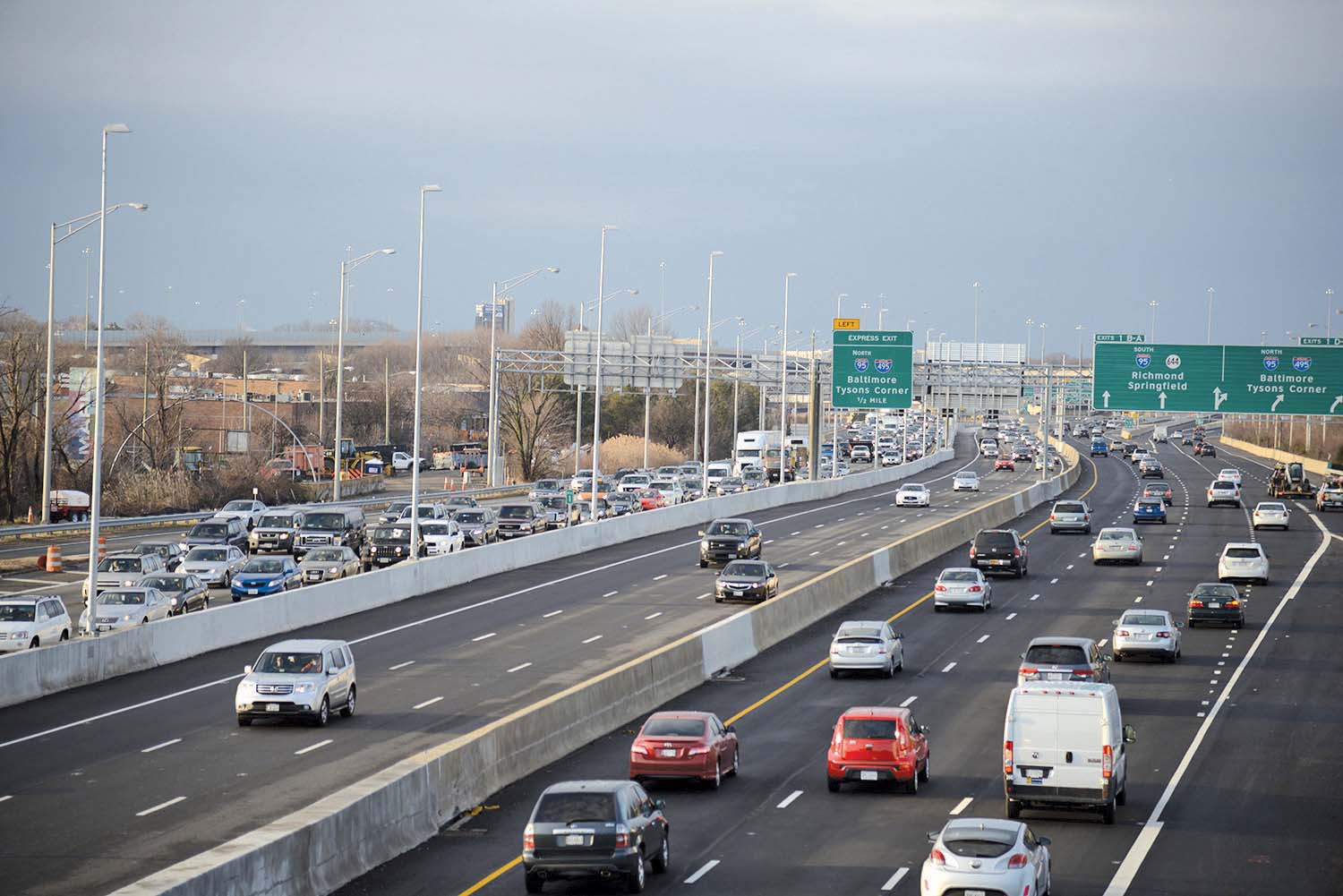
Land availability restrictions and tidal traffic flows have led to the implementation of a novel managed lane configuration in Texas, as Colin Sowman finds out.
Dealing with traffic congestion related to the ‘tidal flows’ caused by large numbers of commuters making their way into major business hubs in the morning and returning to the suburbs in the evening, has seen the widespread use of adaptive signal timing and even reversible lanes. More recently, the conversion of under-utilised high occupancy vehicle (HOV) lanes into high occupancy toll (HOT) or managed lanes is being used to help manage congestion and provide choice for peak period drivers. Now, however, the authorities in Texas are combining these two solutions with the introduction of reversible managed lanes on part of the I-30 between Dallas and Arlington. The $63 million managed lane conversion along the corridor is part of the TEXpress Lanes network.
The HOV lanes run in the margin between the eastbound and westbound carriageways and were already reversible for most of the corridor to cater for the tidal flows. However, the conversion from HOV to managed lanes would create a dramatic rise in the number of vehicles diverting from and to the main free-use highway – and not only local registered users familiar with the layout.
While timing of direction changes would be preset on weekdays, those at the weekend were to be left flexible.
So the conversion from HOV not only required a bi-directional tolling system but also some additional measures to inform drivers of the HOT lanes’ status, and to prevent them from entering and exiting from the ‘wrong’ way.
Intersections on the reversible section are of a ‘wishbone’ design to enable vehicles to join from, and exit to, the right-hand lanes of both the eastbound and westbound free-use carriageways.
With the predicted increase in use, it was deemed necessary to have some form of physical barrier to prevent eastbound motorists taking the on-ramps when the managed lanes were running westbound and vice-versa.
The control system also needed to close the appropriate off-ramps from the managed lanes to, for instance, prevent westbound motorists exiting on to the eastbound carriageway and finding themselves facing a stream of oncoming traffic.
These requirements posed a particular problem for the I-30 team as the HOV lanes are sandwiched between the free-use carriageways, so there was little available space for any additional infrastructure.
It was also necessary to give drivers approaching the wishbone intersections prior information about the status of the managed lanes, particularly as the weekend timings are variable, in order to prevent any last-second direction changes or emergency braking. And one final technical hurdle was that the tolling system needed to accommodate both dynamic pricing, to maintain the required minimum 80km/h (50mph) speed, and directional changes when the lanes are reversed.
To prevent drivers heading in the ‘wrong’ direction entering the managed lanes, Texas DoT has installed Versilis’ automated SwiftGate as a way of safely closing the on-ramps from the main carriageway. The horizontally pivoting gates are post-mounted and made of reflective material with embedded LED lighting. A series of these pivoted gates, each slightly longer than the one upstream, is used to progressively close-off the on-ramps. If drivers ignore the ‘Entrance Closed’ VMS messages and aim to join the HOT lanes, the brightly coloured and illuminated gates provide a clear indication that such a manoeuvre is not an option.
A similar arrangement is used on the managed lanes to close the appropriate off-ramps and prevent, for instance, westbound drivers rejoining the main carriageways on the eastbound lanes.
The gates are crash-tested and in the event of an impact the arm will release. While the gate may suffer significant impact damage, the vehicle should only receive cosmetic damage, if any. Should all of these warnings fail to deter a driver, vehicle arresting barriers have been installed that will stop a vehicle from entering the facility.
A total of 110 SwiftGates are installed on this project and according to
As the tolling system needs to cope with both HOV discounts (including motorcycles) and traffic moving in either direction, the existing RFID tag system could be utilised and TEXpress users can register EZ tags, TxTag or TollTags. An ANPR-based system (with two sets of cameras) is employed to detect vehicles without tags, with an invoice for the toll payment sent to the registered owner's address.
During weekdays the managed lanes run eastbound overnight between 9pm and 11am, and westbound from mid-day to 8pm, allowing an hour for switchovers to ensure all lanes are clear and to undertake any minor maintenance before the traffic starts flowing again.
Dynamic pricing is used to maintain the minimum 80km/h (50mph) speed in the HOT lanes with high occupancy vehicles and motorcycles qualifying for a 50% discount in peak periods. On the other hand, pay-by-mail drivers are charged up to 50% more than account holders - both prices displayed not only for information but also to reinforce the advantage of registering to pay on account.
In August 2016 the 14.5km (nine miles) of reversible managed lanes were opened and will form half of the 29km (18.7 miles) managed lane corridor between Dallas and Arlington when the route is completed in 2020. Since the reversible section was open it has met the forecast of registering 240,000 transactions per month.
At the end of January the reversible lanes transitioned to a dynamic pricing structure - the fourth TEXpress facility to make the transition.
The I-30 managed lane project is also integrated with DFW region’s rideshare website (TryParkingIt.com) and the I-30 Insider campaign. This allows drivers who normally drive solo on I-30 to log carpool journeys, transit trips and their use of other transport options along the corridor, earning them points that are redeemable at restaurants, stores and online retailers.
Through integrating with these initiatives, the project qualified for a grant through the federal Value Pricing Pilot Program which aims to test whether incentives can induce lone drivers to change their habits to car share, rideshare or switch to other modes.
A survey is currently being conducted to examine the reasons why people may not be able to switch the way in which they commute. The findings will feed into other initiatives to influence commuter behavior.











